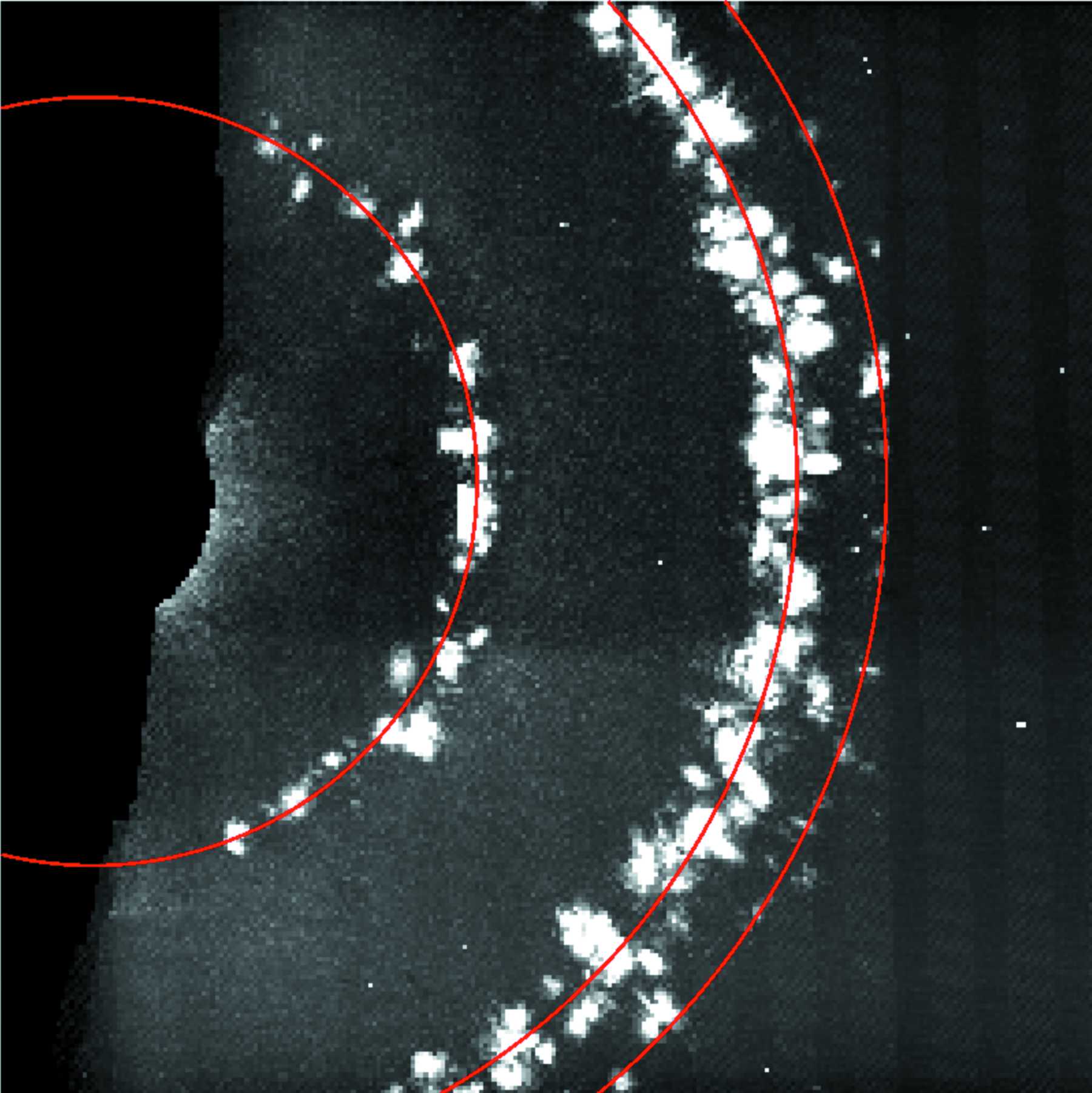
- Details
- Tuesday, 07 August 2018

A team of researchers, led by scientists from DESY, has demonstrated the successful use of a new type of liquid jet at high pulse repetition rates at FLASH. The study shows that liquid jets recover in time for the next pulse even at very short inter-pulse times of only 220 nanoseconds. Furthermore, the researchers conducted the first crystal diffraction experiments using X-ray pulse repetition rates of about a million pulses per second (MHz).
X-ray diffraction experiments typically require the collection of large amounts of data. High repetition rate free-electron lasers (FEL) are ideally suited to produce these data in a short time. However, high repetition rate FELs were limited to low photon energies in the past. FLASH at DESY was the only FEL that exceeded a repetition rate of 120 Hz and can reach the carbon K-absorption edge. Since September 2017, when the first user experiments at the European XFEL started, such a high repetition rate could also be gained at this new facility, although at moderate X-ray energies (below 10 keV).
The sample injection is crucial for this type of experiment. An aerosol injection technique, to reduce the background scattering by non-sample material in the X-ray beam, is commonly used for diffractive imaging of isolated particles and viruses. Whereas liquid jets or other “connected” sample delivery methods are typically used for crystallography experiments. In this case, the strong interaction between the sample carrier and the intense X-ray pulse leads to a disruption of the continuous sample flow. With the destruction extending several micrometers from the interaction point, sample delivery velocities approaching 100 m/s are needed to deliver fresh sample to the spot of the X-ray beam.
From all sample delivery methods used for serial femtosecond crystallography (SFX), so far only the liquid jet technology can reach these conditions. However, it was not clear until recently, if liquid jets might still be too slow to overcome the challenge of the exploding jets. The novel type of liquid jet nozzle, designed by the research team, can form such jets with velocities of up to 80 m/s – an increase by about a factor of 4 compared to previously used liquid jet nozzles. But even more importantly, the diameter of the liquid jet streams are thinner than those of other nozzles. Thus, the unwanted interaction between the X-ray pulse and the jet is reduced, which causes fewer explosion effects and improves this technique significantly.
Reference:
Rapid sample delivery for megahertz serial crystallography at X-ray FELs; M .O. Wiedorn, S. Awel, A. J. Morgan, K. Ayyer, Y. Gevorkov, H. Fleckenstein, N. Roth, L. Adriano, R. Bean, K. R. Beyerlein, J. Chen, J. Coe, F. Cruz-Mazo, T. Ekeberg, R. Graceffa, M. Heymann, D. A. Horke, J. Knoška, V. Mariani, R. Nazari, D. Oberthür, A. K. Samanta, R. G. Sierra, C. A. Stan, O. Yefanov, D. Rompotis, J. Correa, B. Erk, R. Treusch, J. Schulz, B. G. Hogue, A. M. Gañán-Calvo, P. Fromme, J. Küpper, A. V. Rode, S. Bajt, R. A. Kiriang and H. N. Chapman; IUCrJ (2018), DOI: 10.1107/S2052252518008369
